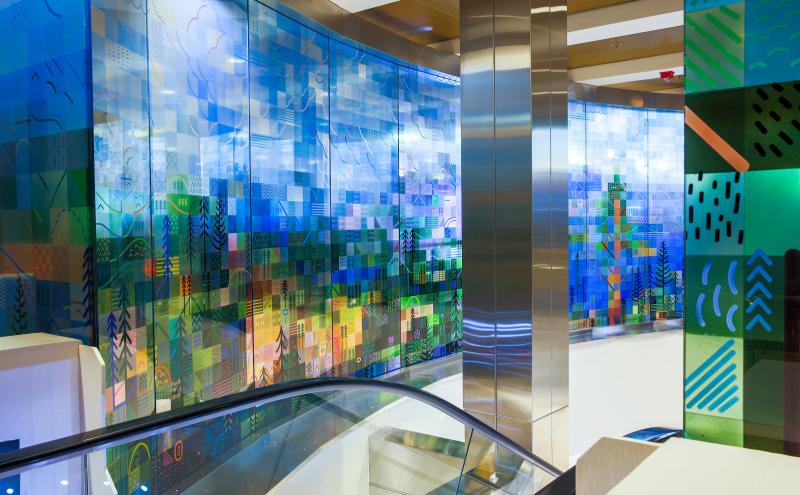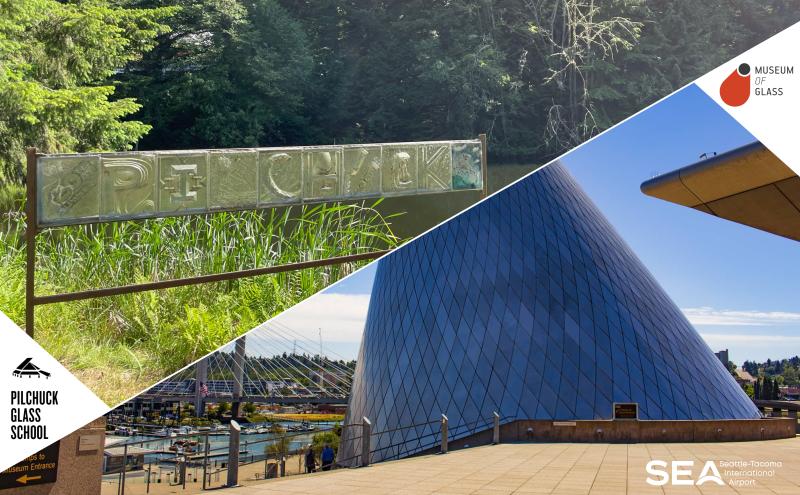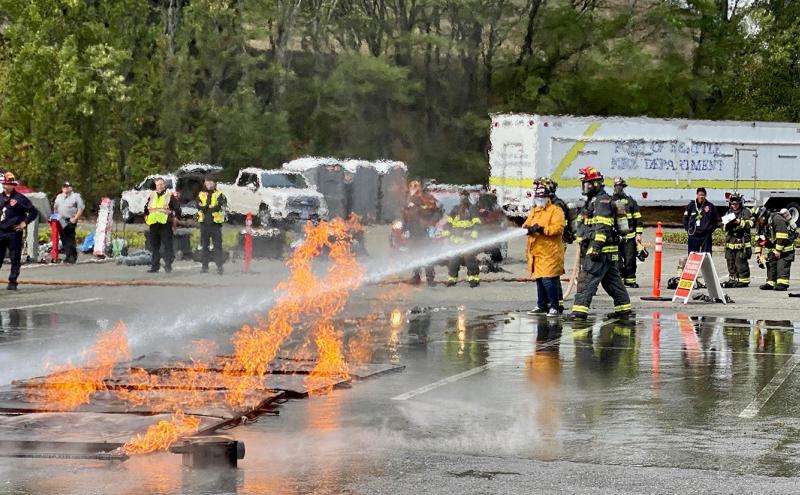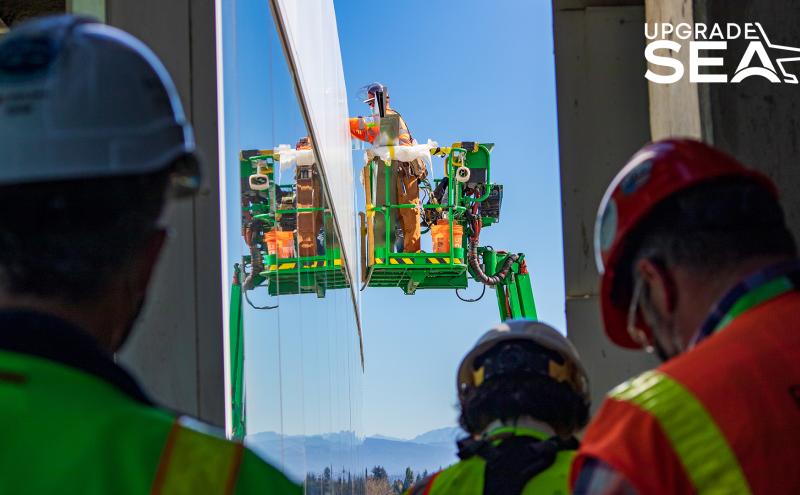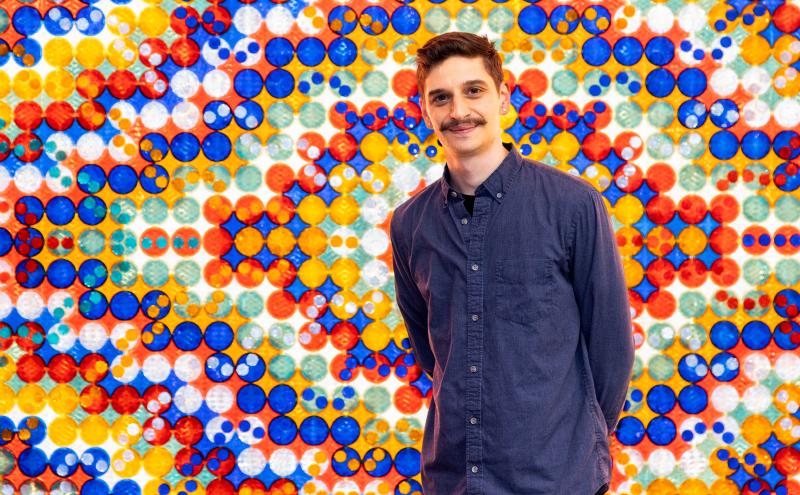
Did you ever imagine that an art technician would be a job you'd find at an airport? For Pete Fleming, keeping Seattle-Tacoma International Airport’s (SEA) world-class art collection in top shape is an everyday reality. Fleming, public art technician at SEA, has worked in galleries and museums for over a decade and is also an artist himself — specializing in photography and printmaking.
Working with a collection that serves a local and global audience is a dream come true for Fleming. As the first airport in the country to have a public art program, the Port and SEA Airport have long been committed to displaying museum-caliber contemporary works from local, national, and internationally-renowned artists to travelers and employees. The airport's art collection currently features 221 pieces and continues to grow and evolve as the airport upgrades its facilities to make travel easier, more efficient, and more convenient.
Read about the Public Art Program at SEA→
“I was familiar with the art collection from traveling through SEA and I was impressed by its breadth and scope,” Fleming said. “There are some really amazing pieces. The Port is a dynamic place to work, and my team members are excellent people.”
Every week at SEA is different, but one thing remains the same — the role of problem-solving in Fleming’s work, as he focuses his efforts on the conservation, maintenance, installation, relocation, and protection of art across the airport.
Here’s how Fleming spends his time as a public art technician.
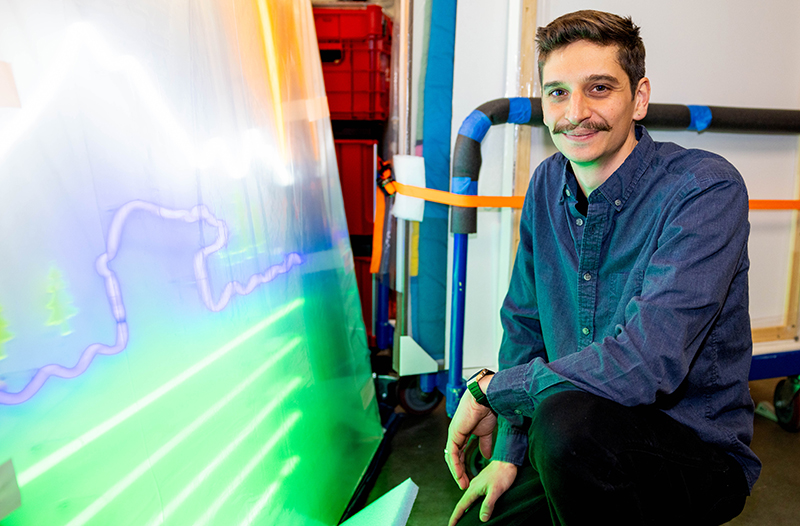
Conservation and maintenance
At the beginning of each year, Fleming walks through the airport terminals with his cart filled with restoration tools and a ladder, and identifies any major conservation projects for the year.
He also:
- Identifies pieces that need to be cleaned and uses special materials, chemicals, and products to keep each piece in top condition
- Notes risks to each piece based on its location or how it is displayed
- Details conservation efforts that need to happen immediately and in the future
- Logs the condition and needs of each piece in a master file
- Works with other departments on any maintenance issues that impact the art
He's also responsible for maintaining the temporary art cases located at the ticketing and SEA Underground levels, which sit at eye level, and give passersby unrestricted access to the pieces. These pieces require a lot of polishing and repainting, and Fleming is also responsible for switching out the cases throughout the year.
Installation
As work moves forward to modernize SEA, there are more opportunities to bring in pieces that celebrate the cultural, historical, and environmental elements of the Pacific Northwest and across the globe while creating new experiences for travelers, partners, and the community.
Fleming helps plan and install new art in these upgraded spaces, and thoughtfully moves existing pieces to bring new life to different locations as the airport changes and grows. The process can be complex and differs from piece to piece.
“It’s not as simple as putting a screw in the wall and hanging it,” he said. “You have to make sure the public will be safe and that the art is safe from the public. I have to make sure it will stay put and won’t leave the wall.”
Installation is a team effort between the airport's public art program staff and partners. And the work is nearly constant with all of the upgrades in progress with Upgrade SEA. Installations are currently in progress with the Restroom Renovation Project, North Main Terminal Redevelopment Project, A Concourse Lounge expansion, Widen Arrivals, and the C Concourse Expansion. Anywhere there is major construction in the terminals, the Art Program will be included.
Fleming’s involvement in the installation process begins when the artist is selected. He answers technical questions about the installation, reviews proposals, considers technical feasibility, solves installation design problems, and determines the long-term conservation and maintenance needs. This process can take around six months from start to finish.
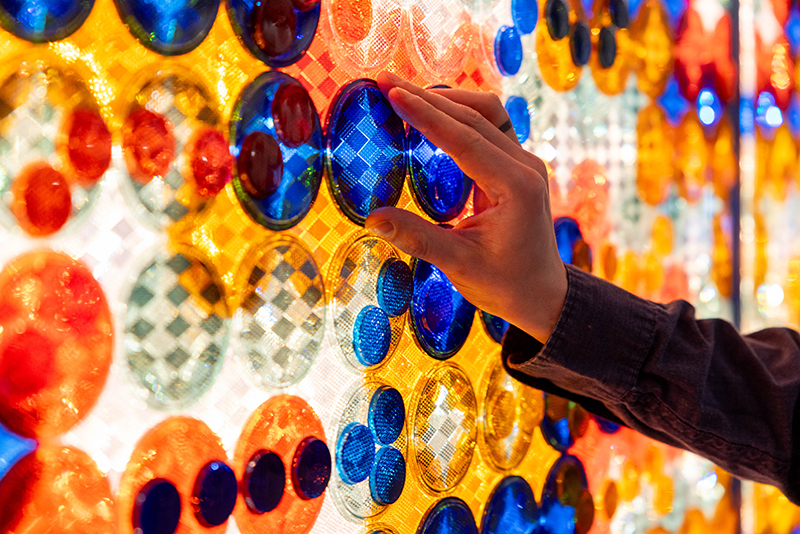
Relocation and protection
Museum-caliber art can be found in nearly every corner of the airport, and with construction projects in the works from curb to gate, Fleming and his team make sure everyone involved is aware of the need to protect art through the process.
In collaboration with the rest of the public art team, Fleming identifies improvements that protect the pieces, like framing artwork and using plexiglass to keep the pieces safe, increasing visibility by moving nearby furniture, or making something more apparent or less in the way.
“We look at visibility and how people interact with artwork,” he said. “Like with the Restroom Renovation Project, we take particular care to examine how people moving through a space interact with the artwork, and how passengers’ bags can impact the art or catch themselves on it. We’re building protection into the installation of artwork.”
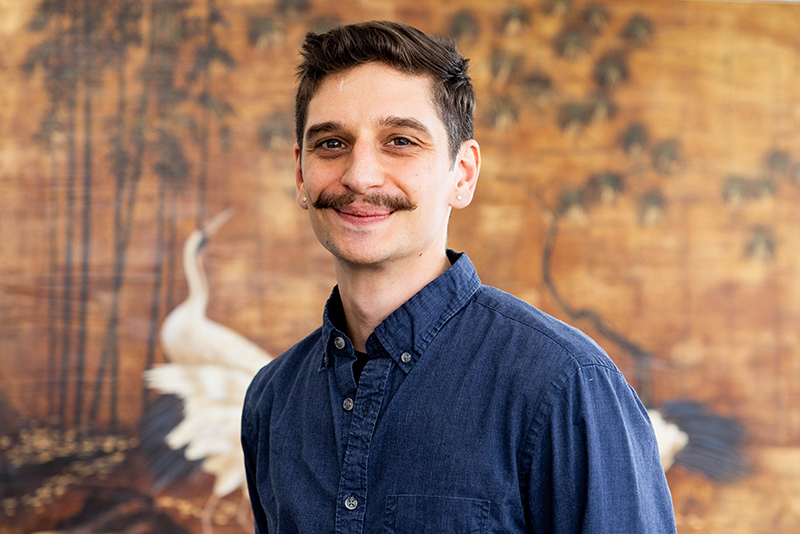
Museum quality art
As travelers make their way through SEA, they will see art on display from artists featured at top-tier museums like the Seattle Art Museum or the Museum of Modern Art in New York. Fleming takes his stewardship role very seriously.
With just under 46 million travelers passing through SEA in 2022, the airport is six times as busy as the world’s most popular museums. For Fleming, it is critical that travelers see the art as the artists intended.
“As publicly-held assets, it is my duty as a public employee to make sure the art stays in good condition for the people of King County and surrounding areas to enjoy for generations to come,” Fleming said.
Upgrades = opportunities
As the airport improvements take shape, it brings opportunities for local artists to be featured at the airport.
“The airport represents one of the best opportunities for artists in the area to realize large-scale projects,” Fleming said. “It’s exciting to see how they handle the challenges of the airport space.”
His advice for travelers and art patrons at the airport:
“Take a moment to enjoy the art. Spend time with the collection and see the value in it. That’s what it’s there for — for passengers to enjoy. SEA has one of the best art collections in the region. I’d love for people to pause and celebrate the art collection — it's a rare and wonderful thing to have in our facility.”

